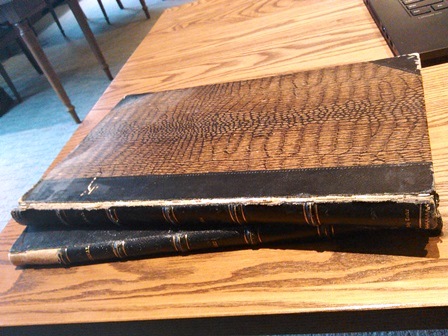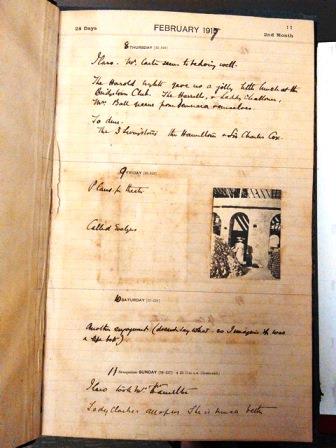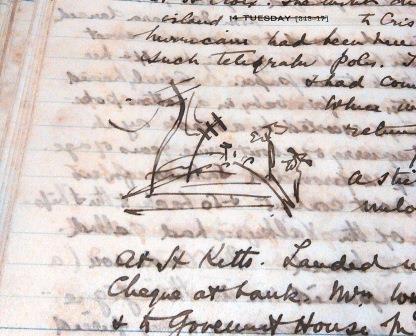By Anna Clutterbuck-Cook, Reader Services
In late December, I introduced readers to Lady Gertrude Codman Carter, whose diary we will be exploring month-by-month through 2017. While a fairly regular diarist, Gertrude Carter’s journal skips from the end of December 1916 to February 8, 1917 without clear explanation. Thus, our January installment of this series will be slightly atypical as I introduce you to Carter’s diary through the look, feel, and format of the volume itself.

Unlike last year’s diary, which contained line-a-day entries with little or no elaboration, the Carter diary is a wealth of variation. While physically designed in a pre-printed format much like the line-a-day-diaries of Margaret Russell, Carter’s diary is a large format of 11.5 x 7 inches, three days per page. As you can see, Codman uses the design of the pages as only a loose guide; to begin with, she has repurposed a pre-printed volume meant for 1915 for her record of two years later. This thrift, perhaps caused by wartime shortages, requires her to correct the numerical date for each entry as well as the year printed next to the month on each page.

The page above, with which the diary opens, is preceded by the rough edge of several torn pages. Were the pages removed because they were unused, or was their information within them the diarist or descendent did not wish to be seen by future eyes? Impossible to tell from the volume itself.
It is also clear from Carter’s entries that, in some cases at least, the details were added in retrospect. “Another engagement,” she writes under February 10, a Saturday, “(doesn’t say what – so I imagine it was a life…)” … any suggestions for what that final word may be? To what other record is she referring, the record in which she failed to record her engagements? Another mystery.

An artist, Carter’s record incorporates the visual. The photo affixed to the February page above is pasted on the date without remark, appearing to be an image of a construction site of some kind — perhaps work being done on Ilaro, the residence Carter was designing for her family. On other pages, we will encounter fanciful sketches and brilliant paintings, such as this tiny island sketched in an otherwise dense page of writing and the “Study of Captain Silver’’s Parrot,” both found in the volume for 1916.

In February, we will delve into the stories shared in the diary itself, including a long narrative recording about a what Carter deems a “real case of telepathy,” and the long, deathly shadow of the ongoing war.
Do you have specific questions about Codman’s life or diaries? Leave a comment below! Throughout the year, I will be exploring Codman’s biography and context, and will be happy to take requests.
If you are interested in viewing the diary yourself, in our library, or have other questions about the collection please visit the library or contact a member of the library staff for further assistance.

